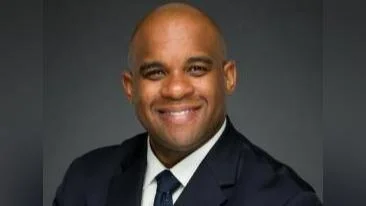Dr. Jamie Oberman | Frederick Breathe Free
Dr. Jamie Oberman | Frederick Breathe Free
- The eustachian tube links the middle ear to the upper part of the throat.
- Eustachian tube dysfunction can cause symptoms such as hearing difficulties, ringing in the ears, balance problems, ear discomfort resembling an infection, and a sensation of fullness or pressure in the ears.
- Eustachian tube dysfunction can result from various factors, including allergies, the common cold, the flu, or chronic acid reflux.
“The reason the eustachian tube is related to chronic sinusitis is because it's all the same lining and paranasal sinuses,” Dr. Oberman told the North Baltimore Journal. “The nose and the nasopharynx all become inflamed and over time become dysfunctional or hypoventilated, so that you're prone to infections and symptoms of either ear fullness with eustachian tube dysfunction, hearing loss, recurrent infections or recurrent sinus infections and the incumbent symptoms that go along with that.”
According to Healthline, eustachian tubes are small tubes that run between your middle ears and the upper throat. They are responsible for equalizing ear pressure and draining fluid from the middle ear, the part of the ear behind the eardrum. The eustachian tubes are usually closed except for when you chew, swallow, or yawn.
These passageways are small in size and can get plugged for a variety of reasons. Blocked eustachian tubes can cause pain, hearing difficulties, and a feeling of fullness in the ears. Such a phenomenon is referred to as eustachian tube dysfunction (ETD), a relatively common condition. Depending on the cause, it may resolve on its own or through simple at-home treatment measures. Severe or recurring cases may require a visit to the doctor.
ETD frequently resolves on its own, but if symptoms last for more than two weeks, it's recommended to visit a doctor, according to Cleveland Clinic At-home remedies to resolve ETD could include chewing gum, yawning, swallowing, or using a saline nasal spray. People whose ETD has been caused by allergies could clear up their symptoms by using an antihistamine or other over-the-counter medications. People whose ETD has been caused by an infection might be prescribed antibiotics.
If at-home remedies or medications do not resolve ETD, a doctor might recommend a surgical treatment. One option is eustachian tuboplasty, also known as eustachian tube balloon dilation. This surgery is relatively new and involves a doctor inserting a small balloon through the nasal passage into the eustachian tube and then inflating the balloon. The balloon remains inflated for about two minutes before the doctor deflates and removes it. Patients typically recover from this surgery within one day.
According to Frederick Breathe Free's website, Dr. Jamie Oberman earned his bachelor's degree from Boston College. He pursued graduate studies at Tufts Medical School through the Navy Health Professions Scholarship Program. After completing medical school, he had a career in the Navy until his retirement in 2017, when he transitioned to comprehensive Ear, Nose, and Throat (ENT) medicine.


 Alerts Sign-up
Alerts Sign-up